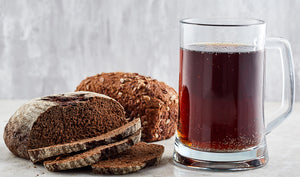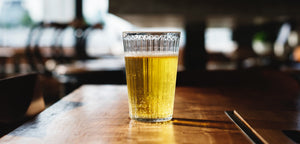1. Always use a starter
With lagers, the yeast cells do not grow as fast as ales during fermentation due to the temperature being so low. So you need to pitch a larger amount of yeast into the wort so your beer doesn't get taken over by competing microbes and spoil. If you haven't made a starter or don't know what a starter is, check out our How to Make a Yeast Starter article.
2. Chill Out!
After you brew, chill your wort down to about 66-70º F. This is a little bit warmer than you want to ferment at, but you want to start off a little bit warmer so that the yeast get a good quick start on those sugars.
3. Ferment Low and Slow
The main difference between ales and lagers is lagers are fermented colder. Lager yeast strains typically should be fermented around 45-55º F. You need some way to get your temperature that low and keep it consistent. Most brewers rig something up like a mini fridge or a freezer with a temperature controller. A more accurate and consistent option is the Immersion Pro with Brew Jacket. This is a brand new product to Canada and works by attaching to your fermenter with an emersion chilling/heating probe that control the temperature.
4. Always do a Diacetyl Rest
Yeast tends to create a compound called diacetyl when they are fermenting. Diacetyl has an unpleasant flavour. Most people say it tastes like butter, popcorn, butterscotch, and even cooked corn. Ale yeasts usually push this compound out of the beer within a few days of primary fermentation. Lager yeasts, on the other hand, tend to be a little bit stubborn. So most brewers like to perform a diacetyl rest to speed up the process of getting rid of the compound. If you're unfamiliar with diacetyl, give your beer a try pre-diacetyl rest to get a sense of what it tastes like, You won't miss it!
Performing a diacetyl rest is easy! Once you are 2-5 gravity points away from your targeted FG, bump your temperature up about 10º F (to about 60º F) for 3 days or until you cannot detect the diacetyl.
5. Lager
The actual “lagering” phase happens after fermentation. Lagering is just storing your beer at a very low temperature for a set amount of time. After your diacetyl rest, lower your temperature 1 or 2º F per day until you’re around 35º F. You want to lower it slowly so that you don't shock the yeast left in suspension. If you lower it too quickly, the yeast can produce a lot of esters and off flavours. Once you reach about 35º F, keep it there for about 4 weeks. During these 4 weeks, the remaining yeast cleans up the beer from phenols and other fermentation byproducts in the beer that may have gotten missed during fermentation. Lagering involves waiting longer for your beer, but it's worth it!
Try This Simple Lager Recipe!
Fermentables
- 4.5KG 2-Row
- 350G Flaked Rice
Hops
- 32G Hallertau (4.5% AA) at 60 minutes
Yeast
- White Labs American Lager Yeast (WLP840)
The Process
- Mash at 150º F for 60 minutes. Mashing this low will help convert all the starches from the rice. If you don't have high efficiency, consider increasing your mash time to 90 minutes.
- Perform a 90-minute boil to rule out any DMS. Add the hop addition with 60 minutes left in the boil
- Chill your wort down to 60º F, aerate well, and pitch a 2L starter.
- Set your fermenter at 50º F and leave it for 3 weeks. After 3 weeks has passed, perform a diacetyl rest by bumping your temperature up to 60º F for 3 days, or until there are no signs of diacetyl. Then, drop the temperature down by 2º F per day until you reach 35º F and forget about it for 4 weeks. Once Lagering is finished, carbonate moderately and serve cold.



